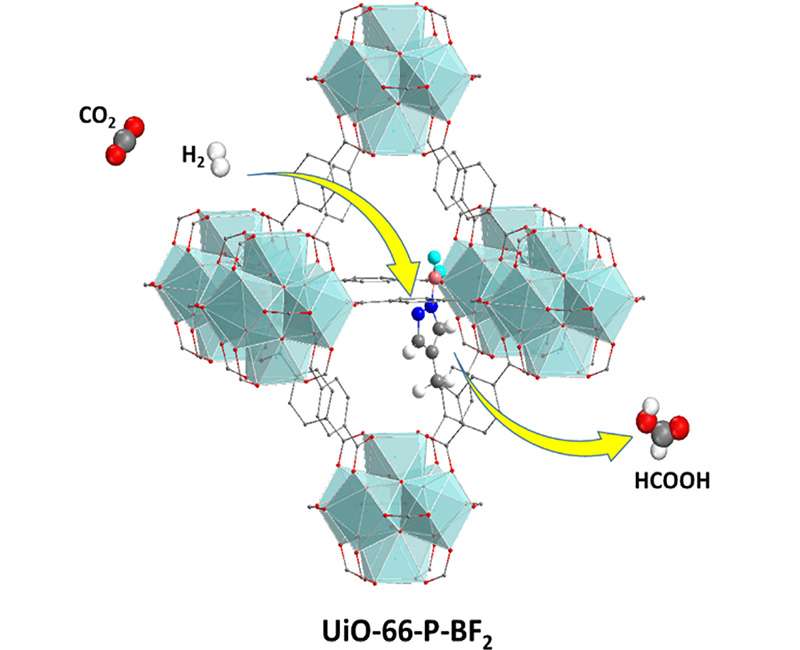Capturing and converting CO2 in a single step

Turning carbon dioxide from coal-fired power plants into a more valuable chemical would reduce carbon emissions while creating a revenue return. At the University of Pittsburgh, researchers computationally derived a metal-free catalyst that captures and converts the carbon dioxide into formic acid. The catalyst allows the conversion to happen without the need for expensive, extreme conditions.
Finding ways to capture carbon dioxide molecules released into the atmosphere from coal-burning power plants is important for reducing the environmental impact as well as providing a pure stream of carbon dioxide to use for other purposes within the industrial setting. This computationally derived catalyst able to capture and convert the carbon dioxide should provide design strategies for efficient, less expensive catalysts.
Carbon dioxide gas (CO2) released during the operation of coal-burning power plants to generate electricity is one of the primary greenhouse gases. The release of CO2 presents a critical need to develop efficient and inexpensive catalysts to separate the greenhouse gas from other gases in the exhaust stream and, in the process, capture the CO2 before it enters the atmosphere. Metal–organic frameworks (MOFs), a form of physical adsorbents that have a cage-like structure built around atoms that include common metals or other molecules, are excellent materials for storing carbon dioxide, implying they could be useful for removing CO2 if outfitted with the proper catalyst. To reduce costs and make MOFs a viable industrial option, expensive metal catalysts must be replaced with a cheaper option. A possible candidate is using Lewis pair moieties that have both Lewis acid and Lewis base sites and are known to chemically bind CO2 while also causing hydrogen to dissociate.
Researchers at the University of Pittsburgh, using density functional theory, designed a specific Lewis pair moiety that can be easily incorporated inside the MOF UiO-66 framework. Then, they used density functional theory calculations to show that the resulting material, UiO-66-PBF2, can dissociate hydrogen and add the resulting positive and negative hydrogen products to the carbon and oxygen atoms of CO2 molecules, respectively, to produce formic acid. This process provides the potential to combine the CO2 capture and conversion steps in a single chemical assembly. The calculations indicate that the porous framework remains stable after both functionalization and chemisorption of CO2 and hydrogen. Additionally, the research group found that activating hydrogen by dissociative adsorption leads to a much lower energy pathway for hydrogenating CO2, which suggests that this material may be a viable option for experimental testing. Future work will investigate other Lewis pair functional groups and how the addition of multiple binding sites per pore could allow for simultaneous activation of CO2 and hydrogen.
More information: "Design of Lewis pair-functionalized metal organic frameworks for CO2 hydrogenation." ACS Catalysis 5, 2921-2928 (2015). DOI: 10.1021/acscatal.5b00396
Journal information: ACS Catalysis
Provided by US Department of Energy




















